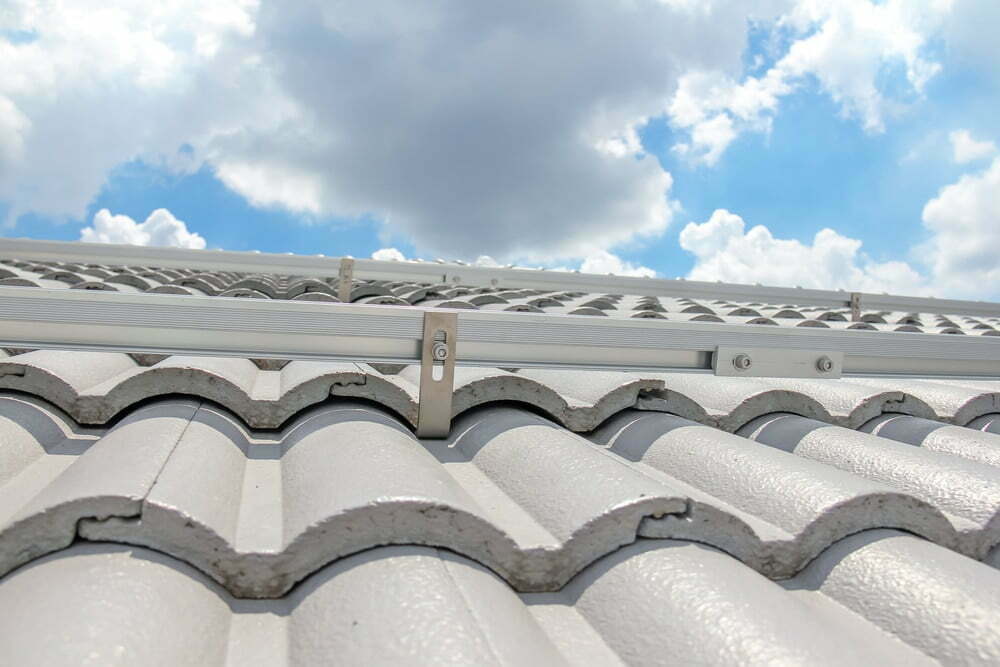
There are a few components of any solar panel system that are naturally vital, and one of these that should not be glossed over is the ways in which your panels are actually connected to your home (or the ground) and fixed in place. This is a process known as racking of solar panels, also sometimes referred to as mounting.
At Intermountain Wind & Solar, we're happy to provide full installation services for any of our residential or commercial solar panel solutions, and these include all the racking and mounting needs your system may have. What exactly is racking and why is it important, plus which components will commonly be found in your solar panel system's racking setup? Here's a deep dive on this important subject.
As we touched on above, racking is the process of connecting your solar panels to something else. This could be anything from a steel support structure on your roof that holds the panels in place, down to a PVC piping setup that sits on the ground and connects your panels together, tying them into an electrical circuit.
Solar panel systems typically feature one of two different types of racking, either standalone or attached. Standalone racking refers to the sort of setup we just described, with PVC pipes and barbed connectors that hold your panels together in an electrical circuit. Attached racking, on the other hand, refers to a method featuring brackets and rails that attach your solar panels directly to your roof's steel supports (or other surface).
Though we at Intermountain Wind & Solar are happy to provide all your racking needs, the manner in which you mount your panels is mostly dependent on their location. For instance, if you have a solid roof with metal supports and few other obstructions, it may make sense to install attached racking solar panels that are directly tied into your support structure. If, however, you have a more complicated roof type with high precipitation and wind speeds or lots of foliage in the area, then it may be better to go with standalone racking on the ground that's secured by stakes.
Which components and materials are most commonly found in racking systems for solar panel setups? Our next several sections will look into this.
For the sake of simplicity, we'll begin our discussion on racking components by looking at the different mounts that are commonly used in solar panel systems. These consist of one or more metal plates, typically secured to either the roof supports or ground via bolts or other fasteners.
In many cases, the use of two simple metal plates is all that's needed to maintain the stability of your solar panels and keep them securely fixed in place. Attached racking systems will often feature a front bracket and back bracket, with an L-shaped rail running between the two pieces of metal that holds the solar panels themselves.
In most cases, solar panel racking will require drilling some holes into your roof's metal supports. This is where the term flashing comes into play, as this process refers to a thin piece of metal installed over the hole that you've made in order to waterproof it.
Solar panel racking will often feature a special type of flashing known as J-brackets, which are specifically designed to absorb and redistribute surrounding pressure so that the holes in your roof are not compromised.
So what are the mounts on your solar panel racking system holding up? Those would be the rails, which are the pieces of metal that are attached directly to your solar panel array. This is where the solar panels will be secured themselves, and these typically feature special clips or other fixtures that allow you to pop them on and off with ease.
As we mentioned above, rails are sometimes integrated directly into the racking system itself, such as with attached racking. In other cases, however, they're separate components that mount onto the rails of your solar panel system and thus are easily removed without needing to disturb the rest of its setup.
Once panels have been placed on their rails in the proper location, it's vital that they're held in place tightly. This is where clamps come into play, as these small metal pieces are sometimes included with racking systems and serve to hold the panels securely against their rails.
Though clamps can be used for both solar panel setup types (attached and standalone), they typically function a bit differently between the two methods. Attached racking uses clamps that wrap around the rails and hold solar panels in place by gripping against their edges, while standalone racking will often include metal brackets that secure individual cells to the ground surface.
If you're unsure about whether to go with an attached or standalone racking system for your solar panels, then be sure to consult with a professional before making a decision. They'll have the experience and knowledge necessary to help you pick out components that will work best in your unique situation.
As you can see, there are quite a few different components that go into selecting and installing solar panel racking systems. From mounts to rails and clamps, not to mention the flashing you'll need for your roof, there are many factors to consider when it comes to ensuring that your overall setup is stable, secure, and able to withstand even harsh conditions.
Fortunately, our team at Intermountain Wind & Solar is here to handle all these needs on your behalf. Contact us today to learn more about this or any of our solar power system solutions!





"All of the photos on this website are of real projects that Intermountain Wind & Solar has designed and installed.
We are proud to show off and stand behind our work."